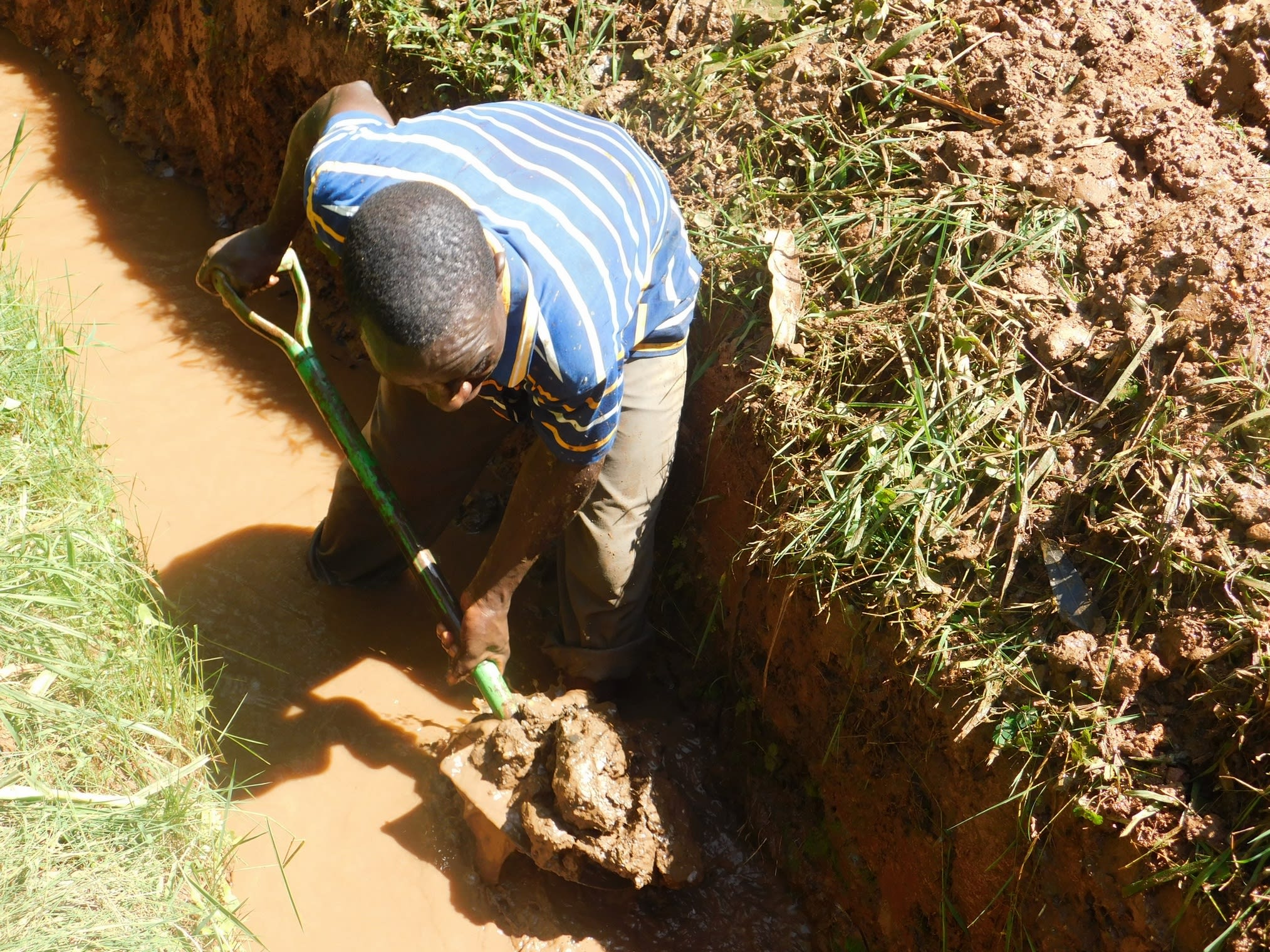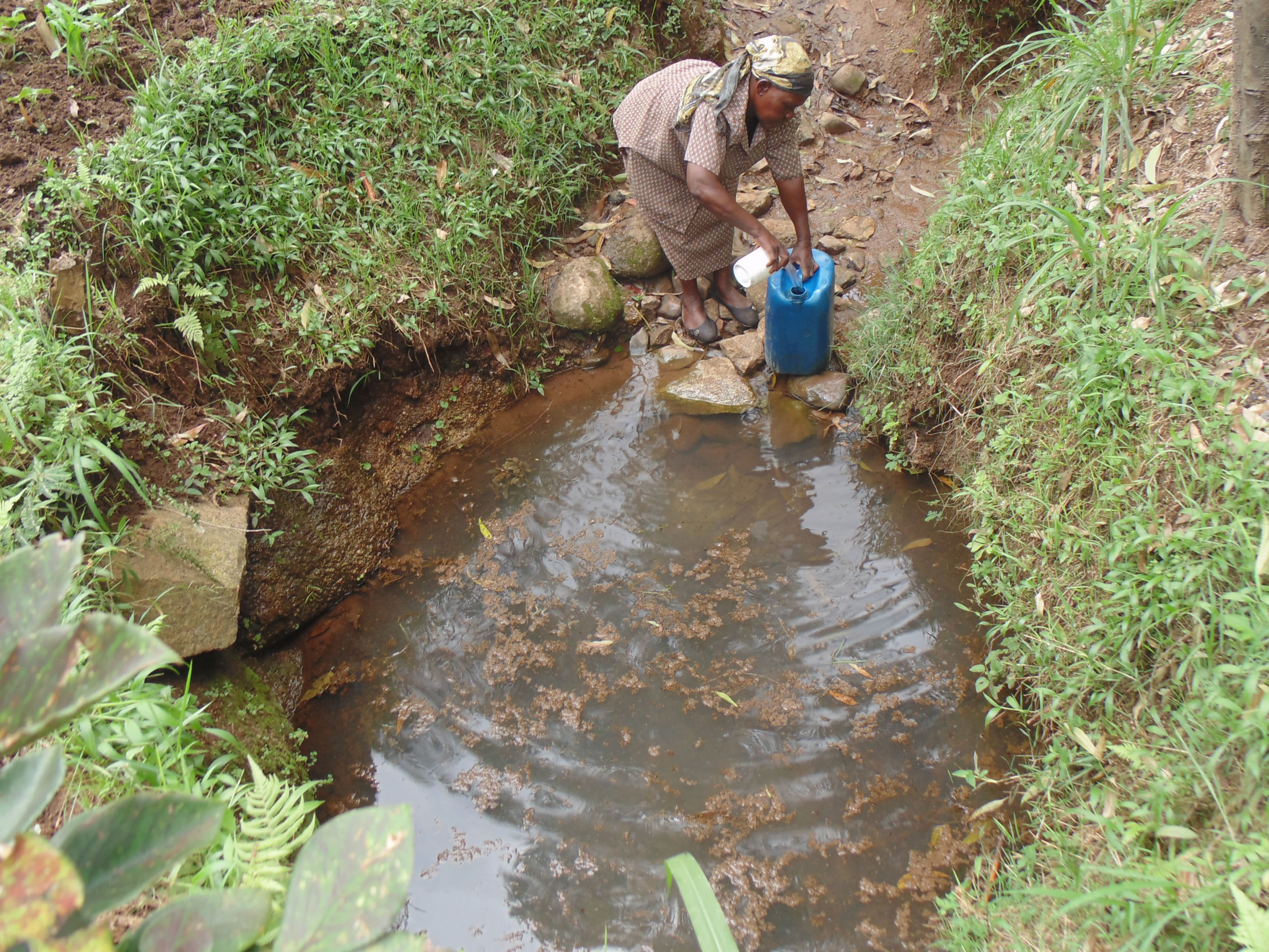Shiru Village is just a little dot on the map in Hamisi. People stir oh-so-early to start their daily chores; the women prepare breakfast while the children prepare for school. Men head out right away to milk the cows. As children rush to school, the women get water from the spring before they head out to join their husbands at their farms.
Everybody reconvenes at home for lunch, including the children who are sent home for an hour break. Men might go back to raising their animals while women take any extra produce to sell at the market. The children expected to stop by the spring to get more water for home when they are finished with school. And then go back for more at least twice.
Water
Sammy Alumola Spring is named after its landowner. This water source forms a large puddle that users dunk their containers in, to fetch water for drinking, cooking, cleaning, and all their other needs. This so-called puddle is filthy, with dirt floating on its murky surface. All sorts of contaminants wash into the water when it rains, not to mention the dirty containers that are constantly dunked into the water.
"This community has suffered a lot due to contaminated water, yet we are blessed to have a spring that doesn't dry up," Mr. Sammy Alumola said. "If something could be done to save us from this predicament, we would appreciate it."
Waterborne disease is the norm for those who have to drink this water, and community members admit that it's probably the cause of constant diarrhea - especially among children.
Sanitation
Not every household has its own pit latrine, but a few share with their neighbors. The latrines we visited are not in good condition, though. They're made of wooden floors that are near impossible to clean. Furthermore, there's no good place to wash hands after using these latrines. It's also rare to see other helpful sanitation tools like dish racks and clotheslines to safely dry belongings up off the dirty ground.
"We are so glad you've come at this time and we pray you come back to help us protect this water and train us on good methods water, sanitation, and hygiene," Mr. Alumola said.
Here's what we're going to do about it:
Training
Community members will attend hygiene and sanitation training for at least two days. This training will ensure participants have the knowledge they need about healthy practices and their importance. The facilitator plans to use PHAST (Participatory Hygiene and Sanitation Transformation), CLTS (Community-Led Total Sanitation), ABCD (Asset-Based Community Development), group discussions, handouts, and demonstrations at the spring. One of the most important topics we plan to cover is the handling, storage, and treatment of water. Having a clean water source will be extremely helpful, but it is useless if water gets contaminated by the time it’s consumed. Hand-washing will also be a big topic.
Training will also result in the formation of a committee that will oversee operations and maintenance at the spring. They will enforce proper behavior around the spring and delegate tasks that will help preserve the site, such as building a fence and digging proper drainage. The fence will keep out destructive animals, and the drainage will keep the area’s mosquito population at a minimum.
Sanitation Platforms
On the final day of training, participants will select five families that should benefit from new latrine floors.
Training will also inform the community and selected families on what they need to contribute to make this project a success. They must mobilize locally available materials, such as bricks, clean sand, hardcore, and ballast. The five families chosen for sanitation platforms must prepare by sinking a pit for the sanitation platforms to be placed over. All community members must work together to make sure that accommodations and food are always provided for the work teams.
Spring Protection
Protecting the spring will ensure that the water is safe, adequate and secure. Construction will keep surface runoff and other contaminants out of the water. With the community’s high involvement in the process, there should be a good sense of responsibility and ownership for the new clean water source.
Fetching water is predominantly a female role, done by both women and young girls. Protecting the spring and offering training and support will therefore help empower female community members by giving them more time and energy to engage in income-generating activities.
This project is a part of our shared program with Western Water And Sanitation Forum (WEWASAFO). Our team is pleased to provide the reports for this project (formatted and edited for readability) thanks to the hard work of our friends in Kenya.

 Protected Spring
Protected Spring
 Rehabilitation Project
Rehabilitation Project



























